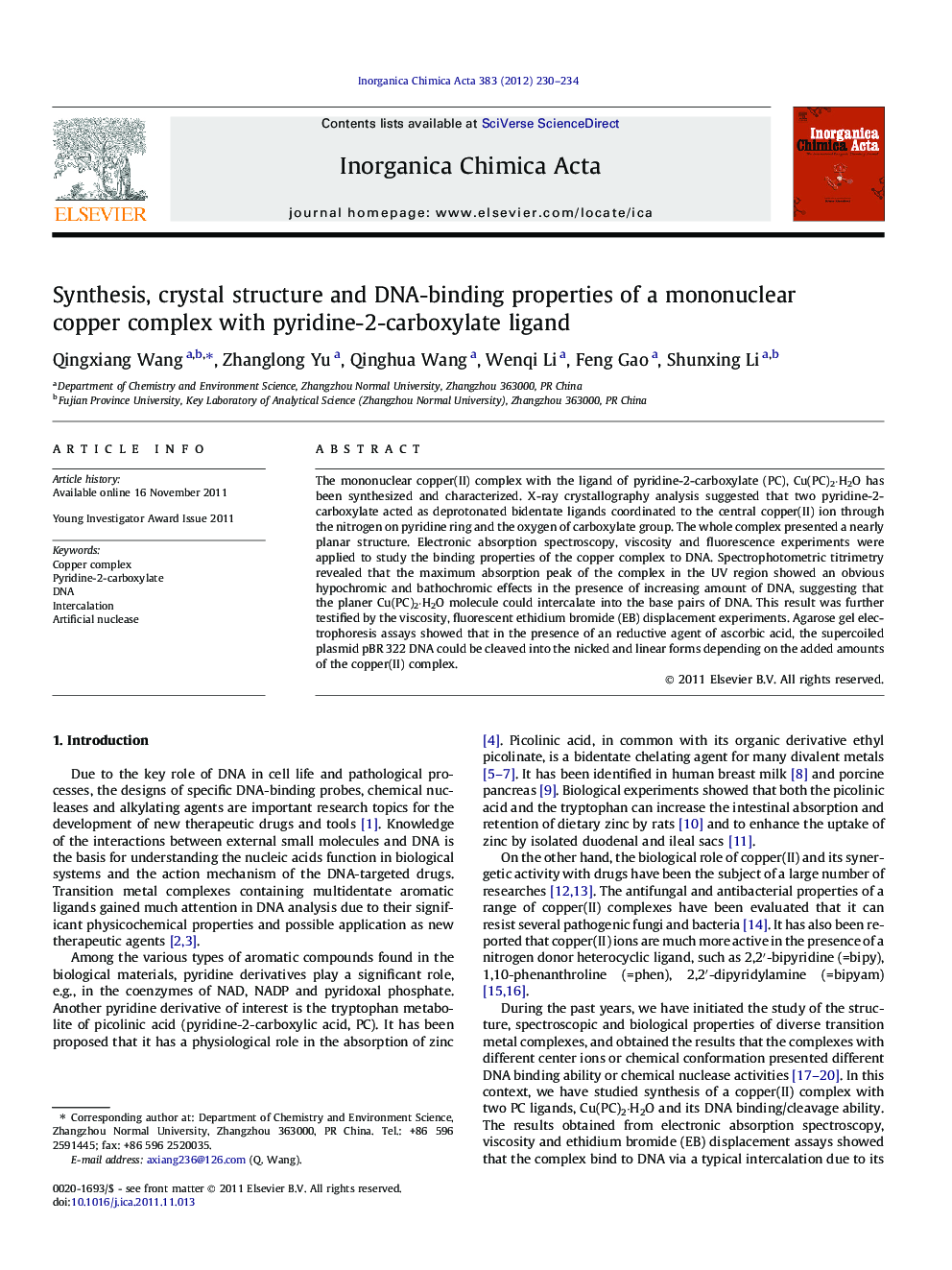| Article ID | Journal | Published Year | Pages | File Type |
|---|---|---|---|---|
| 1312498 | Inorganica Chimica Acta | 2012 | 5 Pages |
The mononuclear copper(II) complex with the ligand of pyridine-2-carboxylate (PC), Cu(PC)2·H2O has been synthesized and characterized. X-ray crystallography analysis suggested that two pyridine-2-carboxylate acted as deprotonated bidentate ligands coordinated to the central copper(II) ion through the nitrogen on pyridine ring and the oxygen of carboxylate group. The whole complex presented a nearly planar structure. Electronic absorption spectroscopy, viscosity and fluorescence experiments were applied to study the binding properties of the copper complex to DNA. Spectrophotometric titrimetry revealed that the maximum absorption peak of the complex in the UV region showed an obvious hypochromic and bathochromic effects in the presence of increasing amount of DNA, suggesting that the planer Cu(PC)2·H2O molecule could intercalate into the base pairs of DNA. This result was further testified by the viscosity, fluorescent ethidium bromide (EB) displacement experiments. Agarose gel electrophoresis assays showed that in the presence of an reductive agent of ascorbic acid, the supercoiled plasmid pBR 322 DNA could be cleaved into the nicked and linear forms depending on the added amounts of the copper(II) complex.
Graphical abstractThe DNA binding and cleavage ability of a planar copper complex with two bidentate ligands of pyridine-2-carboxylate were studied. Electronic absorption spectroscopy, viscosity and fluorescence experiments showed an intercalative binding mode of the complex to DNA. Agarose gel electrophoresis assays showed that the complex could effectively cleavage the supercoiled plasmid pBR 322 DNA to the nicked, linear or short fragments in the presence of ascorbic acid, showing marked artificial nuclease activity.Figure optionsDownload full-size imageDownload as PowerPoint slideHighlights► A planar copper complex with two pyridine-2-carboxylate ligands was synthesized. ► A typical intercalation of the copper complex into DNA was identified. ► Marked artificial nuclease activity was found for the copper complex.
